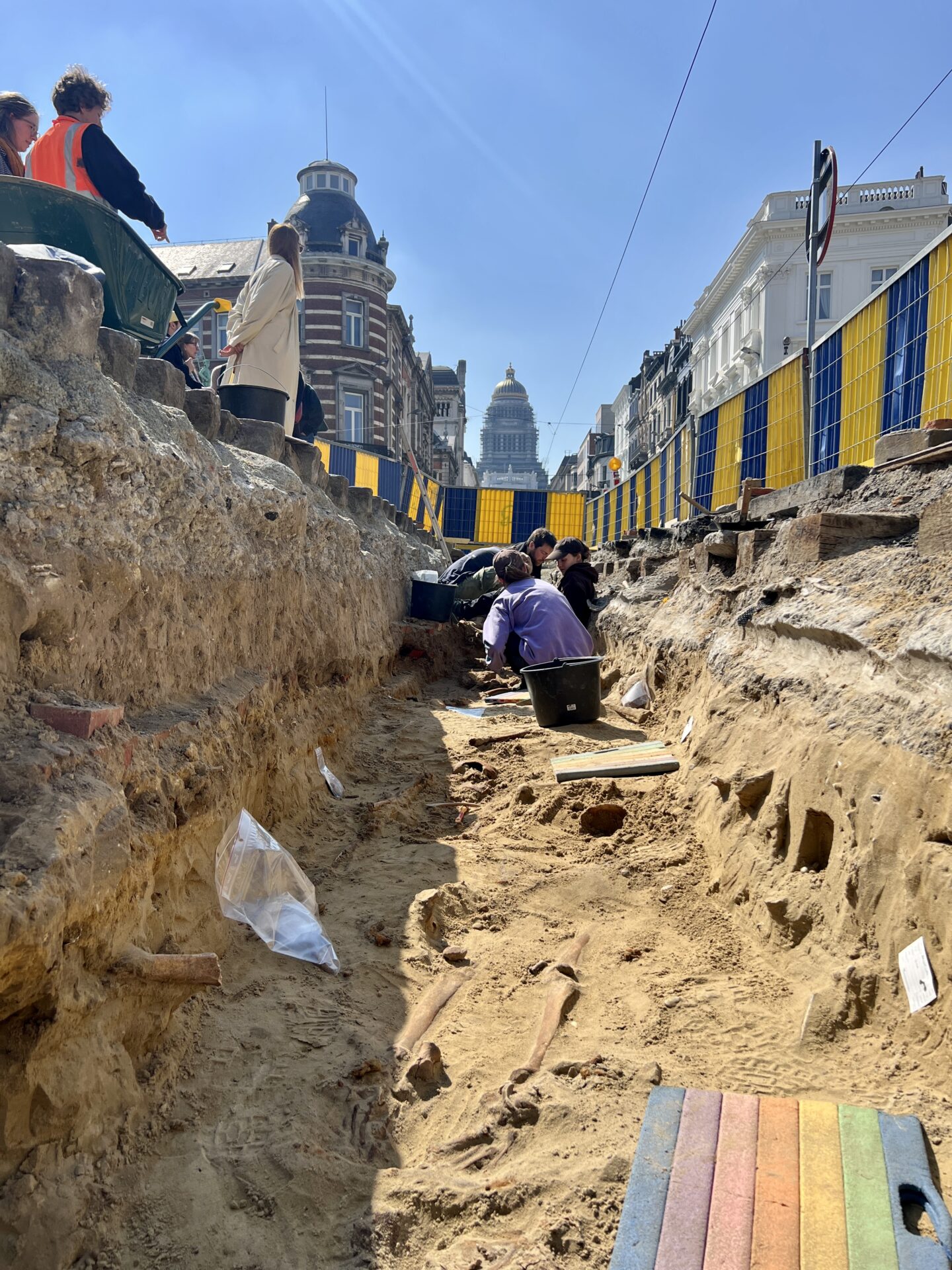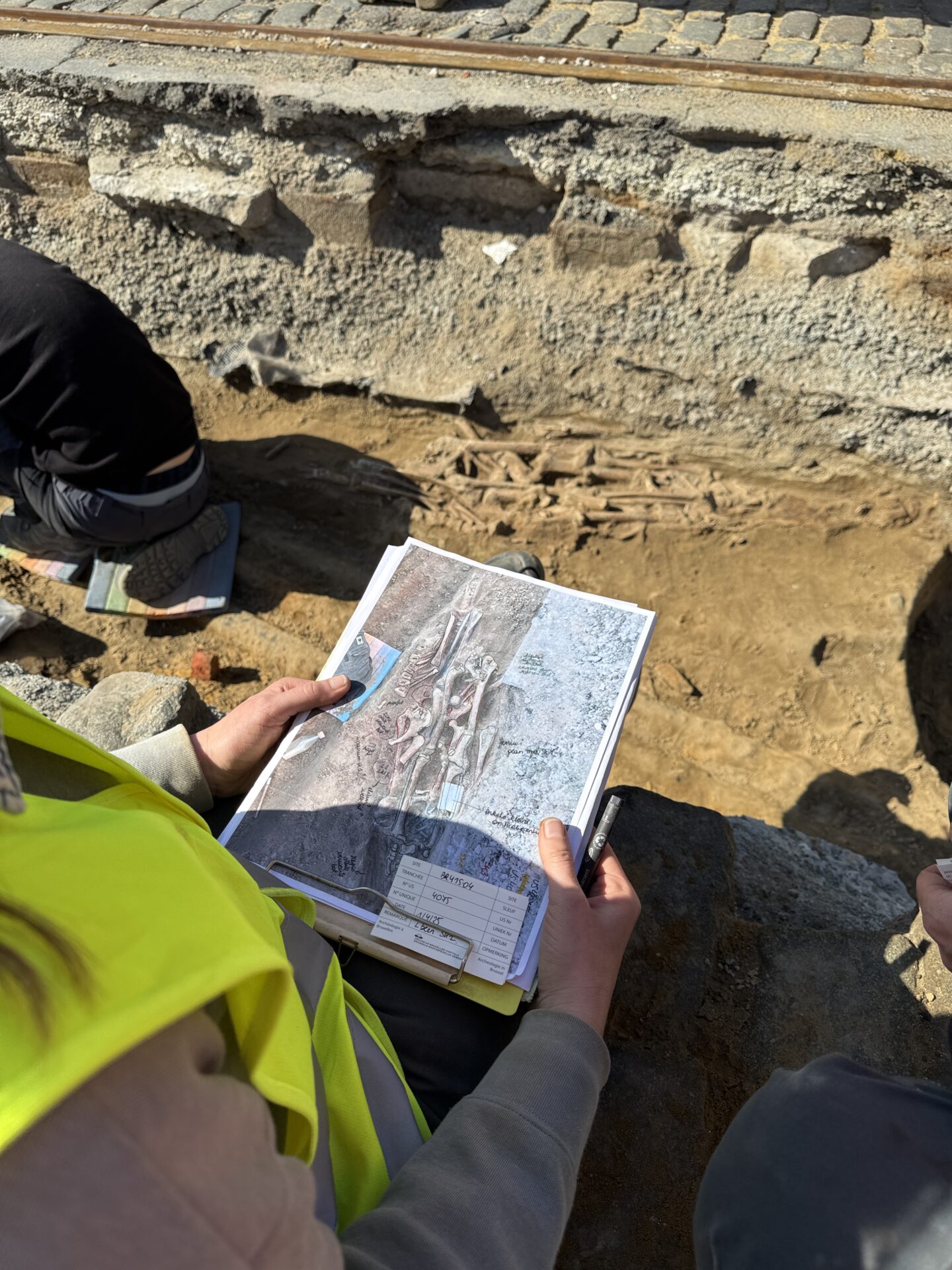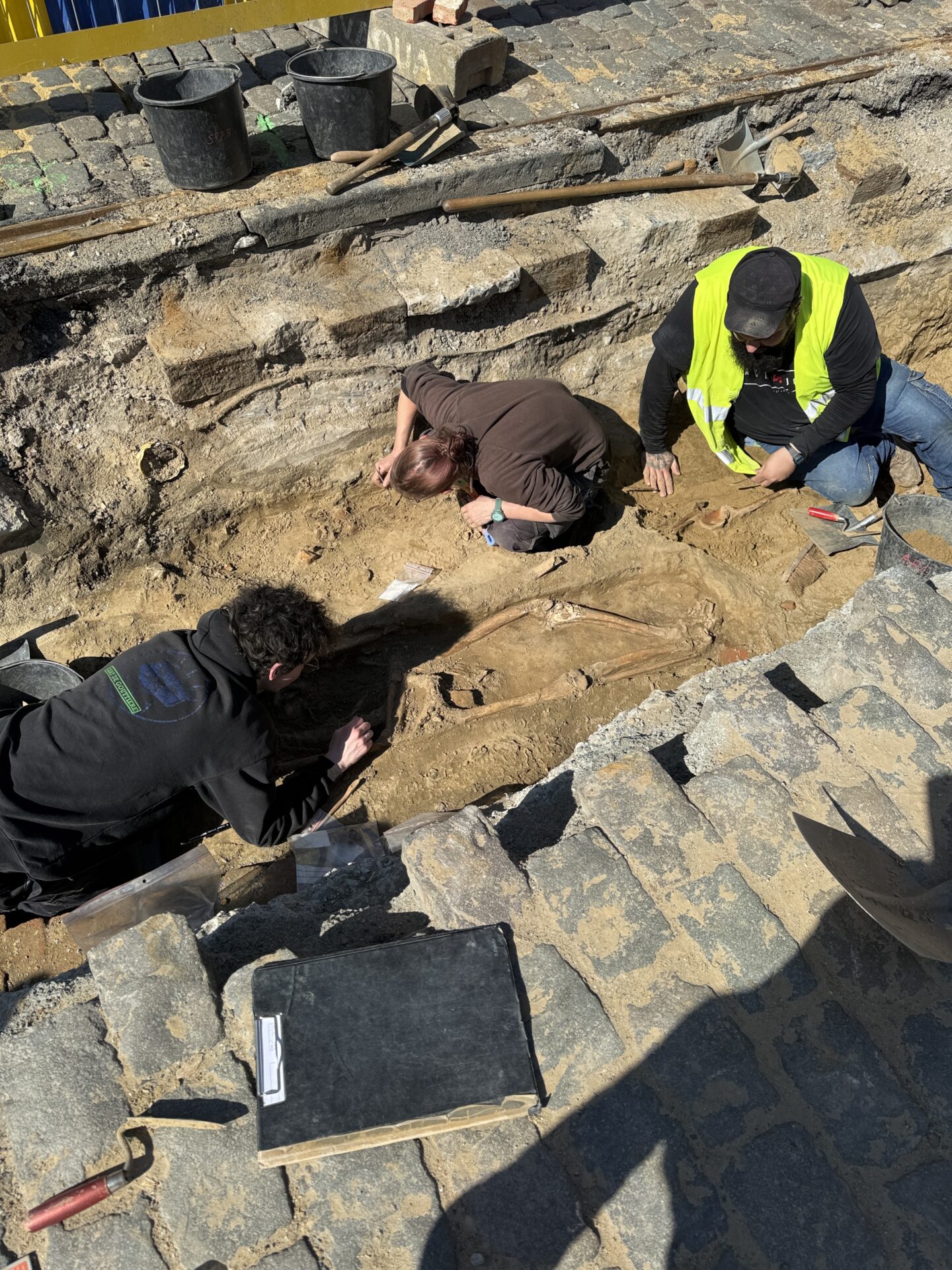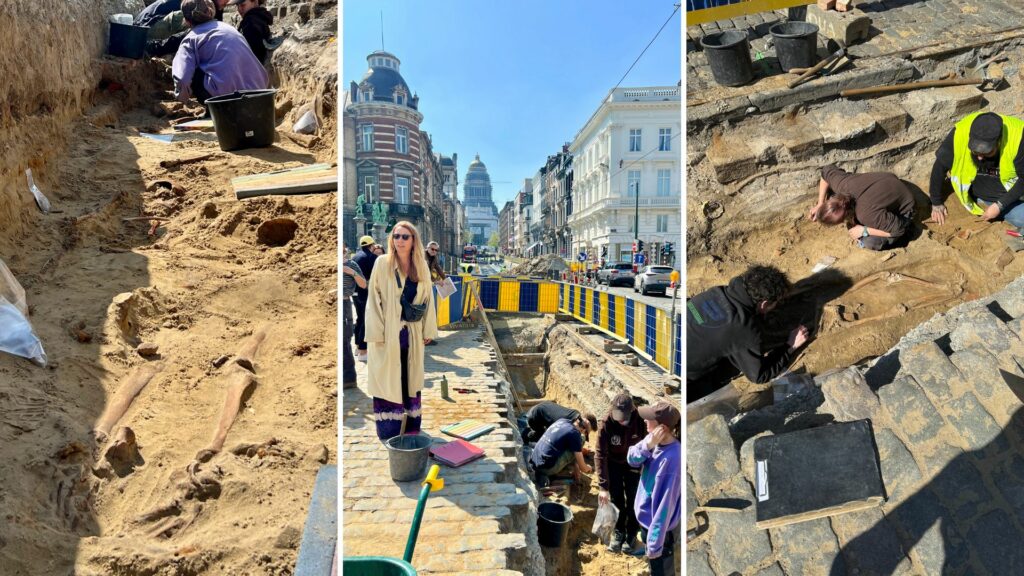More than 30 human skeletons and other remains dating back to the Middle Ages have been discovered in the heart of Brussels, near Petit Sablon, during works to replace water pipes and modernise tram tracks.
The skeletons were found on 19 March underneath the historic cobblestones of Rue de la Régence, announced Brussels State Secretary for Urban Development and Heritage Ans Persoons (Vooruit). According to the experts, it was a cemetery of the former Saint-Jean clinic, which was located on this site from 1300 to the early 1700s.
"These archaeological remains remind us that this place was the cemetery of the former Saint-Jean clinic for 400 years," said Persoons. "It is a place that many Brussels residents and visitors pass by every day without thinking about the past."

Credit: Cabinet of Ans Persoons
The human bones were accidentally discovered during works on Rue de Régence, between the Church of Our Lady of the Sablon and the Petit Sablon. Urban.brussels then sent a team of archaeologists to the site to carry out exploratory excavations.
Several graves were discovered, including one with several children. The bodies were in coffins that were often buried close to and on top of each other.
The cemeteries were initially reserved for the deceased of the hospital, but from the beginning of the 16th century, other inhabitants of the city (especially those from neighbouring districts) were also buried in the Sablon.
In 1704, a decree finally ordered its relocation due to the "unhygienic conditions and poorly maintained" graves. The cemetery of the Saint-Jean hospital was finally moved to Rue Montserrat and Rue de la Prévoyance, where it remained until 1784.

Credit: Cabinet of Ans Persoons
Following the discovery, Vivaqua halted works at this location so that archaeological excavations could take place. They are currently working in a first zone of 12 metres long by 1.6 metres wide and 1.4 metres deep. It is expected that excavations will take place over a total length of 30 metres.
"Every year, between 40 and 70 preventive archaeological excavations are carried out as part of urban development projects. With each excavation, visible and invisible remains and traces are added to the great jigsaw puzzle of our city's history," said Ann Degraeve, Head of Archaeology at urban.brussels.
"By revealing lifestyles, habits and changes over the centuries, preventive archaeology weaves an essential link between the inhabitants of yesterday and today, and offers the city a mirror of its past, a valuable link between past and present, between buried memory and living identity," she added.

Credit: Cabinet of Ans Persoons
The area where the skeletons were found has a complex topography that has changed considerably over the centuries. The area is of great historical value because of the role it played in the development of Brussels and the remains it can reveal.
The Vivaqua team has meanwhile continued its work further along Rue de la Régence, towards Place Royale. The archaeologists are also closely monitoring the works at this location.
On Rue de la Régence, a number of old masonry walls were also discovered that bear witness to the habitation of the area over the centuries. Two very thick walls flank the former Rue de Ruisbroek. It is also possible that the remains of the first city wall (13th century) will be discovered in the coming days.

